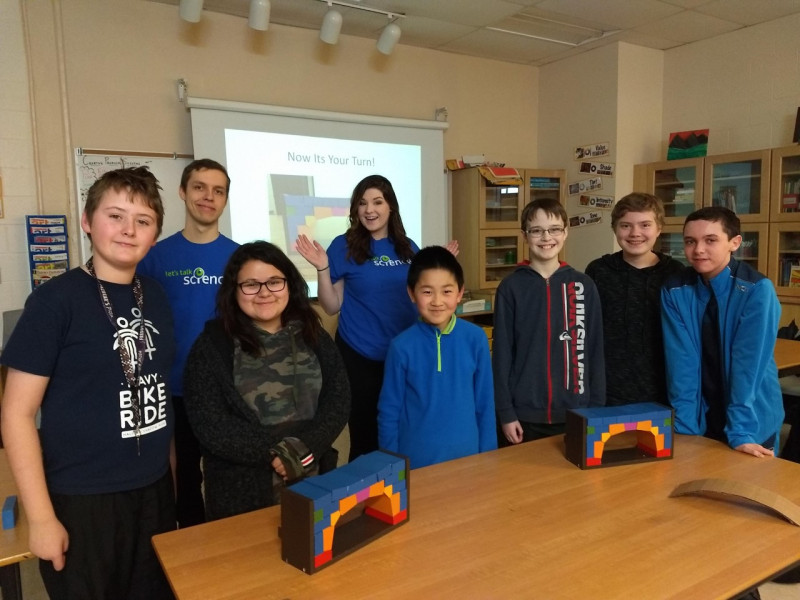School Outreach Project Supports Two-Eyed Seeing

Photo taken pre-COVID.
Cape Breton University Senior Lab Instructor, Chantelle Cormier, is hoping to introduce the guiding principle of Two-Eyed Seeing developed by Elder Albert Marshall into Cape Breton classrooms, through a Let’s Talk Science project using Indigenous and Western Knowledge Systems. The project, entitled Mi’kmaw Night Sky Stories, will develop 12 integrative science kits based on lessons contained within the Mi’kmaw Calendar, to complement previously developed activities around the Mi’kmaw constellation story Muin and the Seven Bird Hunters. The project was recently awarded funding through the Natural Science and Engineering Council of Canada (NSERC), through its PromoScience division.
“The story of Muin and the Seven Bird Hunters is part of a rich oral history, passed from generation to generation. It reveals teachings about cultural importance, astronomy and phenology,” Chantelle explains. Phenology is the study of seasonal changes in plants and animals, and the relationship between these events to weather and climate.
In 2009, the CBU Integrative Science Research Team rekindled this Mi’kmaw Sky Story using the guiding principle of Two-Eyed Seeing for the International Year of Astronomy. The team included Elders Albert and Murdena Marshall of Eskasoni and Elder Lillian Marshall of Potlotek. “This traditional story links the annual cycle of the seasons as observed by the Mi’kmaw with the movement of stars about the Northern Celestial pole,” says Chantelle, “It demonstrates the Mi’kmaw understanding that everything that happens in the sky is connected with what takes place on Earth, or that patterns on Earth are reflected in the patterns in the sky.”
The PromoScience project will develop complementary integrative science kits that will be hands-on/minds-on kits modelled after the Let’s Talk Science kits. They will be developed for elementary students, and materials will be developed in English, French and Mi’kmaq languages. An Indigenous Science Outreach Coordinator will be hired to develop the kits, organize classroom visits and lead professional development opportunities for local school boards. CBU students will also be invited to volunteer with outreach activities.
“Using Two-Eyed Seeing as our guiding principle, this project will bring together Indigenous and Western Knowledge Systems to provide Indigenous and non-Indigenous youth the opportunity to come together in a respectful, reciprocal and responsible way to engage with each other, fostering reconciliation and understanding in the classroom while at the same time inspiring a mutual interest in science,” says Chantelle.
Congratulations to Chantelle Cormier for continued success in science outreach!